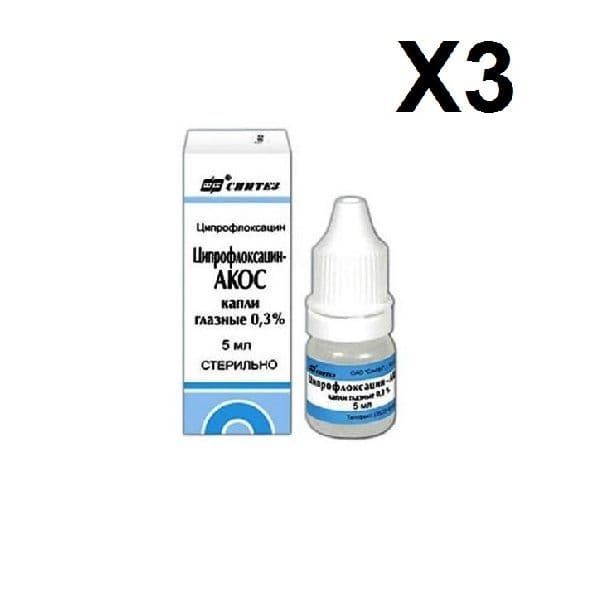You have no items in your shopping cart.

Sku:
Pharmachologic effect
Antimicrobial drug, a derivative of fluoroquinolone. It is bactericidal. Inhibits bacterial DNA-gyrase (topoisomerases II and IV, responsible for the process of supercoiling the chromosomal DNA around the nuclear RNA, which is necessary for reading the genetic information), disrupts the synthesis of DNA, the growth and division of bacteria, causes marked morphological changes (including the cell wall and membranes) and the rapid death of a bacterial cell.
It acts bactericidal against gram-negative microorganisms in the period of rest and division (since it affects not only the DNA-gyre, but also causes lysis of the cell wall), gram-positive microorganisms - only during the fission period.
Low toxicity for macroorganism cells is explained by the absence of DNA-gyrase in them. Against the background of taking ciprofloxacin, there is no parallel development of resistance to other antibiotics that do not belong to the group of inhibitors of gyrase, which makes the drug highly effective against bacteria that are resistant, for example, to aminoglycosides, penicillins, cephalosporins, tetracyclines and many other antibiotics.
Ciprofloxacin is active against gram-negative aerobic bacteria: Escherichia coli, Salmonella spp., Shigella spp., Citrobacter spp., Klebsiella spp., Enterobacter spp., Proteus mirabilis, Proteus vulgaris, Serratia marcescens, Hafnia alvei, Edwardsiella tarda, Providencia spp. Morganella morganii, Vibrio spp., Yersinia spp., Haemophilus spp., Pseudomonas aeruginosa, Moraxella catarrhalis, Aeromonas spp., Pasteurella multocida, Plesiomonas shigelloides, Campylobacter jejuni, Neisseria spp .; Gram-positive aerobic bacteria: Staphylococcus spp. (Staphylococcus aureus, Staphylococcus haemolyticus, Staphylococcus hominis, Staphylococcus saprophyticus), Streptococcus pyogenes, Streptococcus agalactiae.
The drug is also active against some intracellular pathogens (Legionella pneumophila, Brucella spp., Chlamydia trachomatis, Listeria monocytogenes, Mycobacterium tuberculosis, Mycobacterium kansasii, Corynebacterium diphtheriae).
The drug is moderately sensitive to Streptococcus pneumoniae, Enterococcus faecalis, Mycoplasma hominis, Gardnerella spp., Mycobacterium avium-intracellulare (high concentrations are required to suppress them).
The drug is resistant to Bacteroides fragilis, Pseudomonas cepacia, Pseudomonas maltophilia, Ureaplasma urealyticum, Clostridium difficile, Nocardia asteroides.
The drug is inactive with respect to Tréponema pallidum.
The majority of staphylococci, resistant to methicillin, are resistant to ciprofloxacin. The resistance of sensitive pathogens develops extremely slowly, since on the one hand, after the action of ciprofloxacin, there are practically no persistent microorganisms, and on the other, bacterial cells lack enzymes that inactivate it.
Indications
- Acute and subacute conjunctivitis;
Blepharoconjunctivitis;
Keratoconjunctivitis;
-Bacterial corneal ulcer;
-chronic dacryocystitis;
-mybomite;
-infective lesions of the eyes after injuries or foreign bodies;
-pre-and postoperative prophylaxis of infectious complications in ophthalmic surgery.